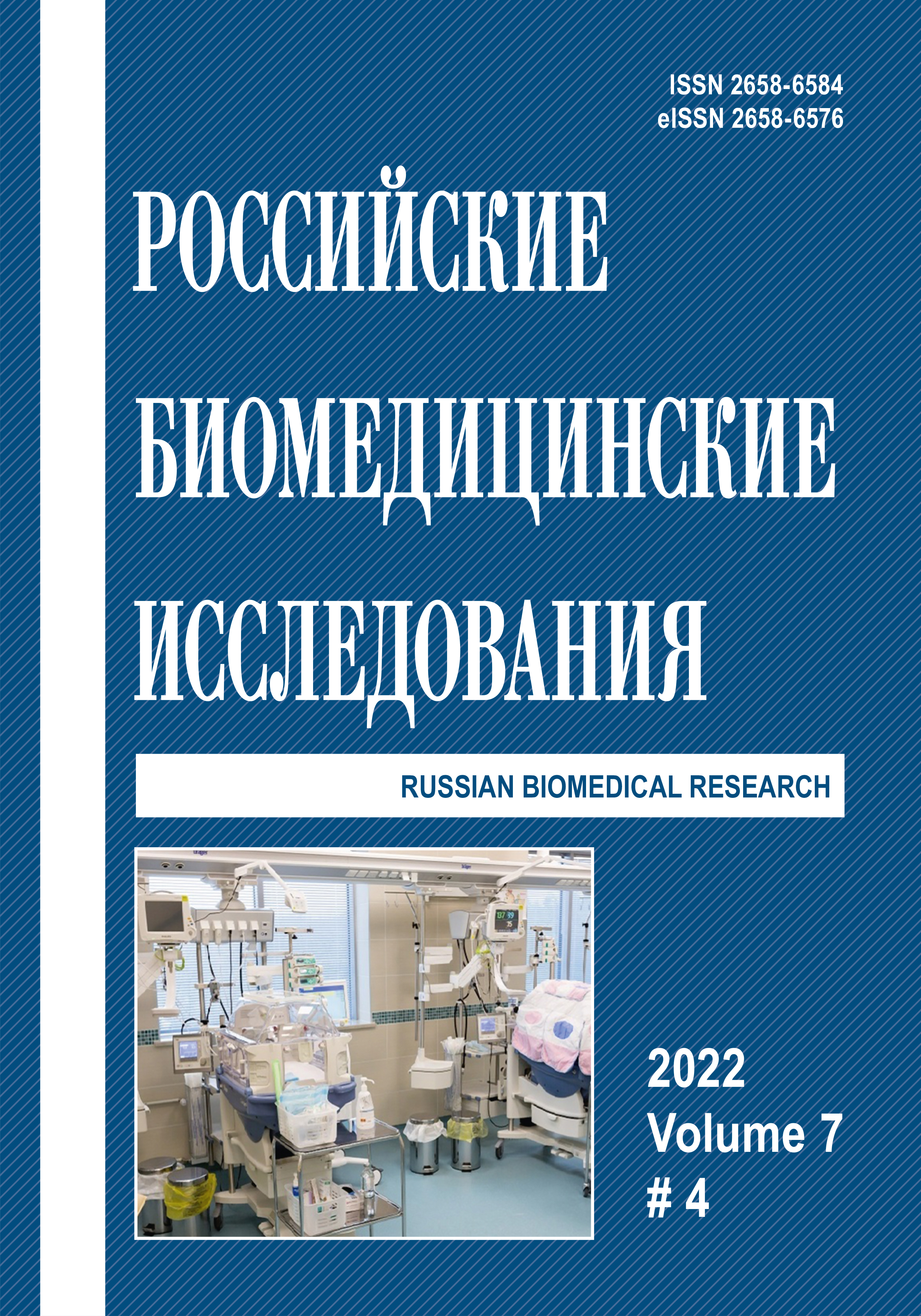EFFICACY OF HEMODYNAMIC SUPPORT IN NEWBORNS IN CRITICAL STATES
Abstract
Correction of hemodynamic disorders in critical conditions of the neonatal period is one of the main tasks of intensive care. The aim of the study is to evaluate the effectiveness of hemodynamic support in newborns in critical condition based on non invasive cardiac output monitoring. Materials and methods. The study included 323 babies: 133 full term and 190 premature newborns. To assess the hemodynamic status and efficacy of catecholamine administration, an ultrasound monitor was used to assess cardiac output USCOM. Heart rate, cardiac output, cardiac index, stroke volume, stroke volume index, systemic vascular resistance and distance in minutes were evaluated. Study results. It was established that the Hyperdynamic type of blood circulation (CI >5 l/min/m2) at admission to ICU occurred in 32 (30%) newborns; hypodynamic (CI <2.5 l/min/m2) - in 42 (40%) and normodynamic (CI = 2.524 l/min/m2) - in 31 (30%) children. After correction of medical support, the number of patients with hyperdinamic blood circulation type decreased by 14.3%, with hypodynamic - by 15.2%, and the number of patients with normodynamic blood circulation type increased by 29.5%. The average duration of vasoactive infusion during cardiac output assessment was 54±9.75 hours, while with empirical prescription it reached 79.03±11.5 hours (p <0.05). The use of non invasive cardiac output monitoring reduced the need for medical hemodynamic support by 44% and reduced the financial costs of the hospital by 52%. Conclusion. Pathogenetically justified target oriented therapy of hemodynamic disorders of the neonatal period, based on non invasive monitoring of cardiac output, allows to reduce the financial costs of the hospital and improve the outcomes of diseases.



